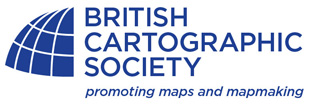
Cartography is the study and practice of making and using maps. Combining science, aesthetics and technique, cartography builds on the premise that reality can be modeled in ways that communicate spatial information effectively.

Wrocław University of Science and Technology is a technological university in Wrocław, Poland. With buildings and infrastructures dispersed throughout the city, its main facilities are gathered at a central location near Plac Grunwaldzki, alongside the Oder river. It operates three regional branches in Jelenia Góra, Legnica, and Wałbrzych. Huffington Post UK named Wrocław University of Science and Technology in the top 15 of the World’s Most Beautiful Universities Rankings.

Geomatics is defined in the ISO/TC 211 series of standards as the "discipline concerned with the collection, distribution, storage, analysis, processing, presentation of geographic data or geographic information". Under another definition, it consists of products, services and tools involved in the collection, integration and management of geographic (geospatial) data. It is also known as geomatic(s) engineering. Surveying engineering was the widely used name for geomatic(s) engineering in the past.

Taylor & Francis Group is an international company originating in England that publishes books and academic journals. Its parts include Taylor & Francis, Routledge, F1000 Research and Dovepress. It is a division of Informa plc, a United Kingdom–based publisher and conference company.

Waldo Rudolph Tobler was an American-Swiss geographer and cartographer. Tobler's idea that "Everything is related to everything else, but near things are more related than distant things" is referred to as the "first law of geography." He proposed a second law as well: "The phenomenon external to an area of interest affects what goes on inside". Tobler was an active Professor Emeritus at the University of California, Santa Barbara Department of Geography until his death.
Geographic information science or geoinformation science is a scientific discipline at the crossroads of computational science, social science, and natural science that studies geographic information, including how it represents phenomena in the real world, how it represents the way humans understand the world, and how it can be captured, organized, and analyzed. It is a sub-field of geography, specifically part of technical geography. It has applications to both physical geography and human geography, although its techniques can be applied to many other fields of study as well as many different industries.

The International Cartographic Association (ICA), is an organization formed of national member organizations, to provide a forum for issues and techniques in cartography and geographic information science (GIScience). ICA was founded on June 9, 1959, in Bern, Switzerland. The first General Assembly was held in Paris in 1961. The mission of the International Cartographic Association is to promote the disciplines and professions of cartography and GIScience in an international context. To achieve these aims, the ICA works with national and international governmental and commercial bodies, and with other international scientific societies.
David William Rhind is a British geographer and expert on geographic information systems (GIS). He was Vice-Chancellor of City University, London, until July 2007.

The British Cartographic Society (BCS) is an association of individuals and organisations dedicated to exploring and developing the world of maps. It is a registered charity. Membership includes national mapping agencies, publishers, designers, academics, researchers, map curators, individual cartographers, GIS specialists and ordinary members of the public with an interest in maps.

Geography is a field of science devoted to the study of the lands, features, inhabitants, and phenomena of Earth. The first recorded use of the word γεωγραφία was as a title of a book by Greek scholar Eratosthenes. Geography is an all-encompassing discipline that seeks an understanding of Earth and its human and natural complexities—not merely where objects are, but also how they have changed and come to be. While geography is specific to Earth, many concepts can be applied more broadly to other celestial bodies in the field of planetary science. Geography has been called "a bridge between natural science and social science disciplines."
International Journal of Geographical Information Science is a monthly peer-reviewed scientific journal published by Taylor & Francis. The editor-in-chief is May Yuan, who succeeded Brian Lees ) in January 2017. The journal covers original research in fundamental and computational geographic information science, including applying geographical information science to monitoring, prediction, and decision making, as well as natural resources, social systems, computer science, cartography, surveying, geography, and engineering, in both developed and developing countries.
The International Journal of Aerospace Psychology is a quarterly peer-reviewed academic journal covering research on the "development and management of safe, effective aviation systems from the standpoint of the human operators." It draws on aspects of the academic disciplines of engineering and computer science, psychology, education, and physiology. It was established in 1991 and is published by Taylor and Francis on behalf of the Association of Aviation Psychology. The editor-in-chief is Dennis B. Beringer.

The Surveying and Spatial Sciences Institute (SSSI) is the professional association for surveyors and spatial science workers, including cartography, hydrography, remote sensing, engineering and mining surveying, photogrammetry and spatial information in Australia. The Institute's members are involved in communities of practice such as land administration, land development, natural resource management, forestry, agriculture, defence, marine environment, local government, health, education, transport, tourism, and many more. The institute deals with policy, administration, collection, measurement, analysis, interpretation, portrayal and dissemination of spatially- related land and sea information, together with associated planning, design and management.

The Cartographic Journal is an established peer-reviewed academic journal of record and comment that is published on behalf of the British Cartographic Society by Taylor & Francis. An official journal of the International Cartographic Association (ICA), it contains authoritative papers on all aspects of cartography: the art, science and technology of presenting, communicating and analysing spatial relationships by means of maps and other geographical representations of the Earth's surface. This includes coverage of related technologies where appropriate, for example, remote sensing and geographical information systems (GIS), the internet, satellite navigation and positioning systems, laser scanning, and terrain modelling. The Journal also publishes articles on social, political and historical aspects of cartography. Occasionally, Special Issues are published that focus on a particular research theme.
The Cartography and Geographic Information Society (CaGIS) is a learned society in the fields of cartography and geographic information science. It includes the U.S. National Committee for the International Cartographic Association (ICA). It started in 1974 as the Cartography Division of the American Congress for Surveying and Mapping (ACSM); in 1981 the division became the American Cartographic Association, and in 1996 it received its current name.

Karuppannan Jaishankar is the founder and principal director and Professor of Justice Sciences at the International Institute of Justice & Police Sciences Bengaluru, Karnataka, India.
Cognitive Neuropsychology is a peer-reviewed academic journal aimed at promoting the investigation of human cognition that is based on neuropsychological methods including brain pathology, recording, stimulation, brain imaging or the study of developmental deficits.
The Journal of Spatial Science is an academic journal about spatial sciences published by Taylor & Francis on behalf of the Mapping Sciences Institute (Australia) and the Surveying and Spatial Sciences Institute. It covers cartography, geodesy, geographic information science, hydrography, digital image analysis and photogrammetry, remote sensing, surveying and related areas. Its editor-in-chief is Graeme Wright; its 2018 impact factor is 1.711.
Mei-Po Kwan is a Chinese geographer and academic. Her contributions to the field include environmental health, human mobility, transport and health issues in cities, and geographic information science (GIScience).
Technical geography is the branch of geography that involves using, studying, and creating tools to obtain, analyze, interpret, understand, and communicate spatial information. The other two branches, human geography and physical geography, can usually apply the concepts and techniques of technical geography. However, the methods and theory are distinct, and a technical geographer may be more concerned with the technological and theoretical concepts than the nature of the data. Thus, the spatial data types a technical geographer employs may vary widely, including human and physical geography topics, with the common thread being the techniques and philosophies employed. To accomplish this, technical geographers often create their own software or scripts, which can then be applied more broadly by others. While technical geography mostly works with quantitative data, the techniques and technology can be applied to qualitative geography, differentiating it from quantitative geography. Within the branch of technical geography are the major and overlapping subbranches of geographic information science, geomatics, and geoinformatics.










